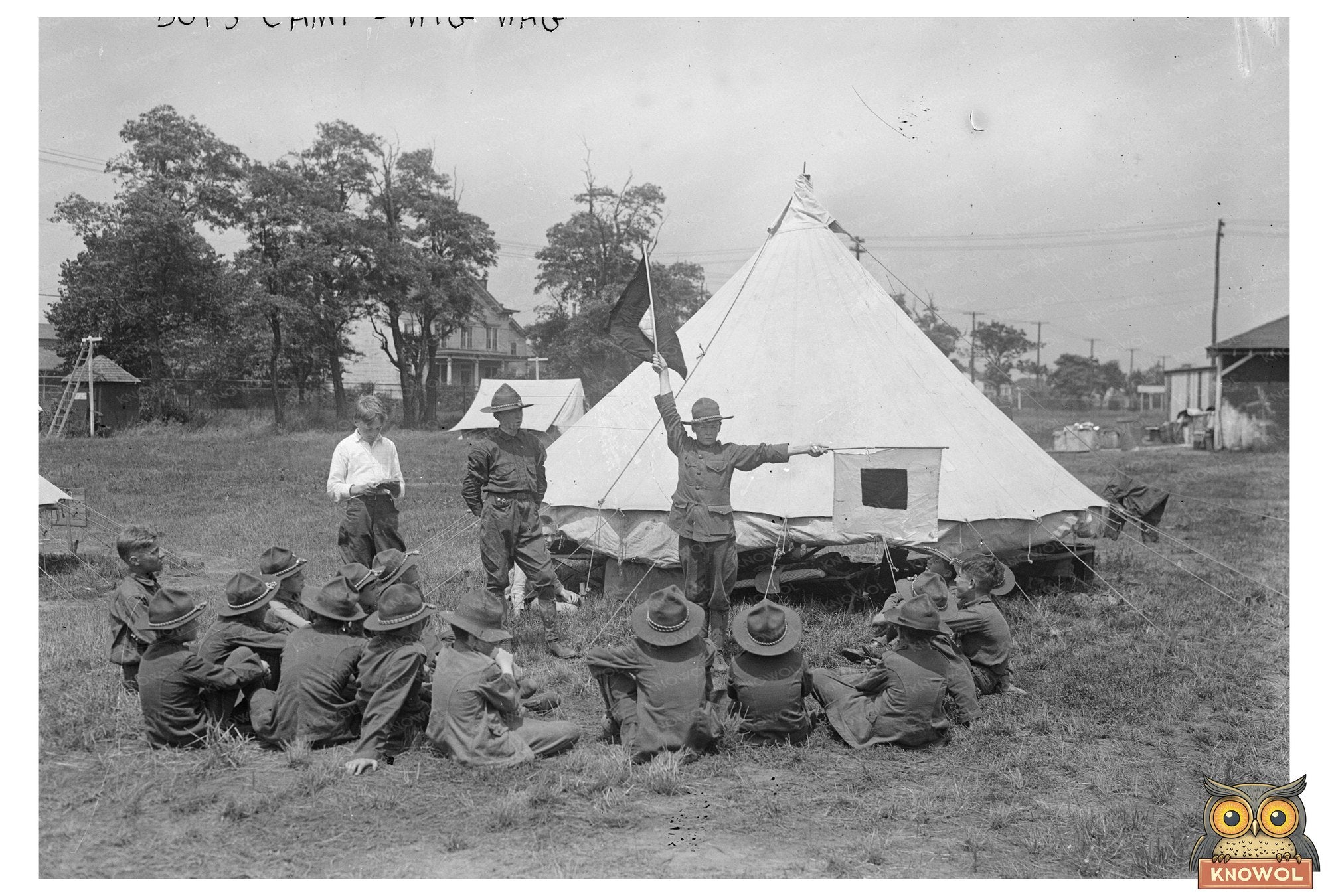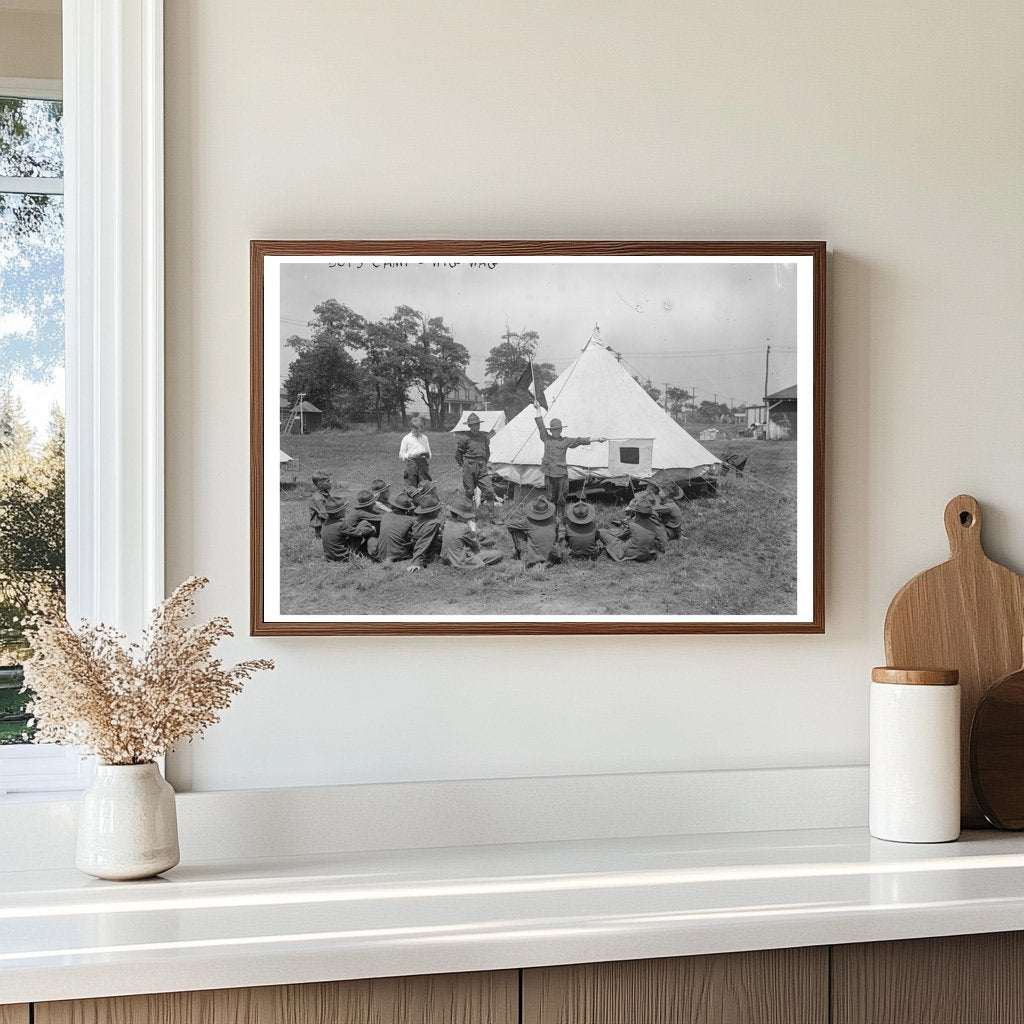


1917 Summer Camp Boys Practicing Wig-Wag Signaling
The photograph Boys Camp -- wig-wag, taken on July 16, 1917, captures a moment from a summer camp experience designed for young boys during a period of significant social change in America. As boys participated in outdoor activities, they engaged in skill-building exercises such as signaling techniques using flags, known as wig-wagging. This method was influenced by military and nautical signaling practices, reflecting the growing interest in outdoor education and self-reliance in the early 20th century.
This image, produced by the Bain News Service, showcases the enthusiasm of camp life against a backdrop of cultural shifts, including the rise of progressive education and the promotion of boys camaraderie. The 1910s were crucial as many camps across the United States began to focus not just on recreation, but also on fostering teamwork and leadership skills. The photograph stands as a visual representation of how such camps aimed to build character and resilience in boys, preparing them for future responsibilities.

1917 Summer Camp Boys Practicing Wig-Wag Signaling
